Divisions
The Topography of a Pysanka
Divisions
The Topography of a Pysanka

When looking at a pysanka and trying to puzzle out its design, it is important first to figure out its major division–i.e., how the pysankarka has divided up the surface of the egg. Only once you have done that can you begin to recreate a design.
(For more information about, and examples of any of these divisions, click on the name to go to that page. Please note that these names are not a standard nomenclature–there does not seem to be one–but names I have given the divisions for convenience.)
According to E. Binyashevshy in The Ukrainian Pysanka, there are nine (well, ten, sort of) ways to divide an egg when making a traditional pysanka. They can be described as follows:
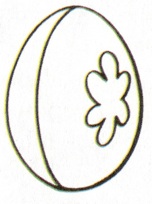
Lateral: the egg is divided into two halves longitudinally, either by a line or band; the motif is placed centrally in each of the two halves. This is a very common division in traditional pysanky, especially the “lateral rose.”
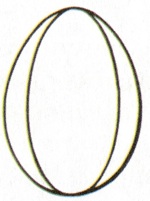
Longitudinal or “Meridian”: the egg is divided into “slices” longitudinally, usually in multiples of four, but occasionally not.
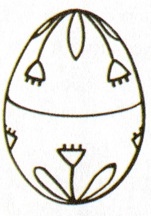
Equatorial: the egg is divided in half around its middle, with a line or a band. The design motifs are placed symmetrically at the poles. This is a much less common division.
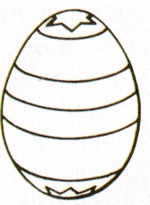
Barrel: the egg is divided into circumferential bands, and a repeating design is placed in these bands. This is a very common division in Hutsul pysanky
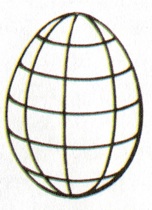
Lattice: the egg is divided into a series of squared by intersecting longitudinal and circumferential lines. Most commonly there are eight longitudinal columns.
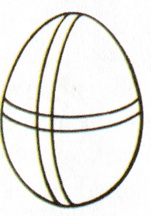
Cross or “4 division”: The egg is divided into four equal sections by two intersecting lines or bands.
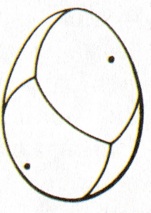

“Sakvy”or Saddlebags: four quadrangles are arranged around the egg in a diagonal manner. Moderately common, but a bit tricky.
The illustration on the right is a more representative version of the Saddlebags division (above).


Diagonal: a challenging but striking division, with a diagonal band around the egg. It is technically fairly difficult, and not very commonly seen in traditional pysanky. Binyashevsky pictures it with a lateral division as well.
The drawing on the right is a more understandable depiction of the Diagonal division.


Sorokoklyn: the traditional “40 triangles/wedges” pattern, it really has 48. The smaller illustration below better demonstrates the triangles better.Pysanky using this division are common throughout Ukraine. A few Diasporan variations are shown here.

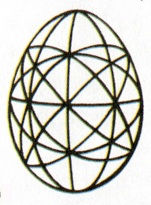
Sorokoklyn “plus”: by further dividing each triangle in the sorokoklyn (above) in half, an egg with 96–or more– divisions can be made.
Binyashevsky did a good job, but he didn’t get them all. Joanna Luciow, in Eggs Beautiful: How to Make Ukrainian Easter Eggs, enumerates (but does not name) twelve divisions, adding a few that Binayshevshy missed. Granted, a few of these could be seen as variations on the themes above.
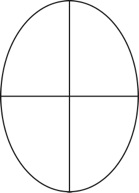
Eight division: this simple division, with one circumferential and two longitudinal lines divides the egg into eight equal wedges. This is one of the most common divisions seen. (aka NP Basic Division A)
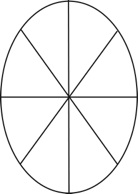
Star division: this is an eight division with each of the wedges further divided by a diagonal. This configuration is used for making pysanky with star motifs or “ruzha” designs. (aka NP Basic Division B)
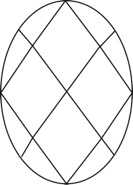
12 Diamonds: A striking and moderately difficult division, it is not very common but creates very attractive pysanky. Note: this is not a common traditional Ukrainian division, but is seen on occasion.
There are two divisions which neither author mentions, but which can be found in traditional pysankarstvo. The first is quite common; the second fairly unusual.
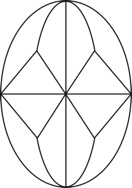
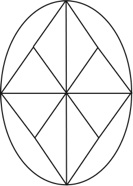
Triangles: An egg is first divided into the “Eight” division, and then each wedge is divided into three triangles. This produces a pysanka with 24 triangles. Neither of these drawings reproduces the 3-D effect completely, as these are all straight lines on a curved surface.
(Top view same as for Basic Division C below.)
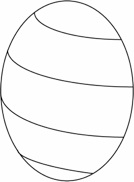
Spiral: A striking and fairly difficult division, it is not very common but creates very interesting, and sometimes breathtaking, pysanky.
Natalie Perchyshyn (NP), in her Ukrainian Easter Egg Design Book series, has combined these various divisions to create three “Basic” divisions, which she uses when breaking down patterns for her readers. The two first basic divisions are the same as the Eight division (Basic Division A) and the Star division (Basic Division B) above.

Globe or Basic Division C is the Meridian division with 8 divisions longitudinally, and the Equatorial division superimposed upon it. (Top view below)

And, lastly, on a philosophical note, can no division be considered a division? There is a certain type of pysanka, common in the Sokal region, which is a free-form garland of flowers that covers the entire pysanka. There is no intentional symmetry, just a sinuous pattern that wends its way around the egg. And pysanky with seemingly random placement of motifs on their surface pop up in other regions as well. These pysanky can be quite beautiful, and are often a challenge for the geometrically inclined to draw.
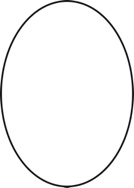
Asymmetric: More challenging than at it seems at first glance, as one needs balance without symmetry.
The following page summarizes these divisions into a handy chart/atlas.
Back to Main Writing Pysanky page
Back to Main Pysankarstvo page
Note: All text and most illustrations © Luba Petrusha 2008. All Rights Reserved. Reproduction prohibited without expressed consent. May contact via e-mail (link below).
How to divide an egg